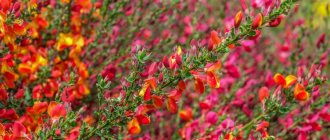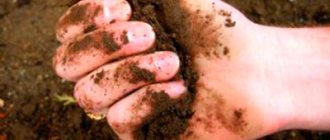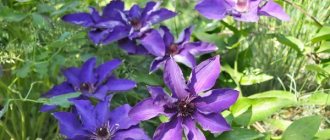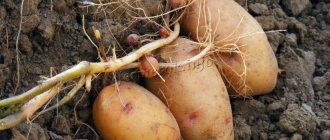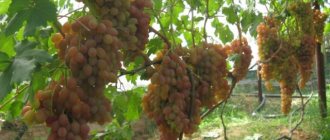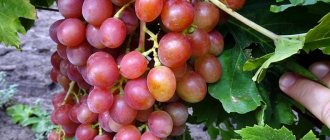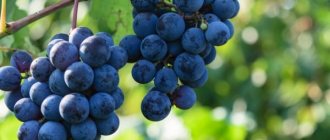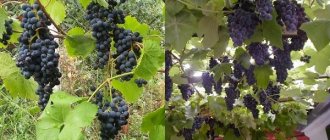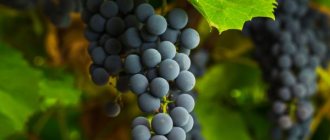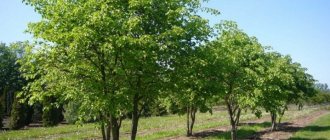Mulching is covering the soil surface with a layer of mulch in order to protect it from weathering and enrich its mineral composition, as a result of its colonization with a large number of agronomically effective microorganisms.
Mulch is any material with which we cover the soil. Mulch can be organic or inorganic. Bark, grass, wood chips, humus, sawdust, straw, paper, cardboard, nut shells, leaf and pine litter, compost, silage, and cake are used as organic mulch.
Inorganic mulch includes films and nonwoven materials, sand, crushed stone, screenings, and expanded clay.
Organic mulch compensates for the removal of nutrients, micro and macroelements from the soil by the crop. And most importantly, with mulch we introduce carbon compounds into the soil, which is the building material of both the plants themselves and future fruits.
How mulching is beneficial for the soil and plants.
Mulching the soil allows you to get rid of weeds in the garden. Reduce the amount of watering, because moisture retention under a layer of mulch is much higher. This is very important during dry periods of the year.
In addition, mulching the soil cools the root zone of plants and allows the suction roots of the plant to consume moisture from the soil at the optimal temperature.
The same cannot be said about a plant that is watered in unmulched soil. It is forced to consume very warm moisture from the soil. And this does not contribute to optimal cooling of the plant during the hot period.
Under a layer of mulch, the soil structure improves. The soil becomes looser, more airy, a large number of soil microorganisms settle in it and, accordingly, the biological activity of the soil increases. Which will definitely have a beneficial effect on your future harvests.
Mulching locks nutrients in the soil, preventing them from leaching and weathering. In addition, thanks to mulch, water vapor condenses from the air.
Mulch stimulates the growth of adventitious roots, because the soil under the mulch is not covered with a crust and air flows to the roots constantly, and not only after loosening the beds.
In addition, a layer of mulch provides a temperature regime favorable for plants. This also prevents deep freezing of the soil in winter. In early spring, beds mulched with leaf litter before winter can be quickly sown with cold-resistant green manures such as winter and spring rapeseed, rye, oats, mustard, and phacelia by removing a layer of leaf mulch.
But don’t rush to put the leaf litter that has served its purpose into the compost; we will need it later. When we lack green grass for mulching in the summer. Due to its fading under the southern scorching sun.
The mulch layer is an obstacle to the development of fungal diseases, preventing the dispersal of spores of late blight, mildioidium and other fungi. Under the mulch, Trichoderma and Bacillus subtilis rapidly grow, with which the causative agents of most fungal diseases are not very friendly.
Article on the topic: Trichodermin and Trichoderma veride are biological plant protectors.
Mulching material prevents soil from splashing onto plant leaves when watering. This provides additional protection against traditional fungal diseases. Which grow wildly in gardens by mid-summer.
Methods and features of using mulch
Mulch is applied throughout the summer season in protected and open areas. They start in early spring and end with frosts in autumn.
Mulch slows down the heating of the soil, so in beds with early crops - strawberries, radishes, materials are laid out when the soil warms up to 12 degrees.
To quickly warm the soil surface before planting, the mulch is temporarily raked, placed in compost, or left nearby to be used in a couple of weeks.
You can mulch in 2 ways:
- Pour the material in layers. All types of organic matter are used.
- Cover the surface. Film, roofing felt, and other artificial flooring are used.
Organic raw materials are kept in the beds all winter. Worms settle here, soil organisms actively reproduce, turning the mulch into humus.
Secrets on how to use mulch correctly:
- The thickness of the layers can vary from 3 to 8 cm in summer. For the winter period, cover up to 15 cm is created. For tomatoes, cucumbers, pumpkin, squash, the optimal depth should be 8-10 cm. For radishes, carrots, beets, celery, make a layer of 4-5 cm. For dill, parsley, green salads mulch to 3 cm.
- Shaded areas are covered more thinly, for brightly lit areas a thicker layer is created.
- During the season, mulch is applied several times, different substances are alternated to stimulate decomposition.
- It is best to lay the first floorings after rain or watering, 4-6 hours later. The ground is first loosened with a flat cutter.
- Small gaps are left between the covering and the plant trunks for air circulation. This is a particularly important condition for shrubs and fruit trees.
- Finely shredded mulch is preferable to coarse mulch. It turns into humus faster, and pathogens and pests are less likely to grow in it.
- It is not advisable to trample down the mulch.
The thickness of the layer should not exceed 3-4 cm on heavy loams, in the vicinity of groundwater, in wetlands. This may lead to rotting.
If weeds are used, mowing is carried out several times, always before flowering and seed ripening. Otherwise, weeds will begin to actively sprout in the beds and multiply.
What needs to be done before mulching.
Before you start mulching, you need to weed out the weeds and loosen the soil. Mulch is spread on the surface of the loosened soil on which vegetables are grown.
The mulch should not adhere closely to the trunk or root collar. Firstly, this can lead to fungal diseases, and as a result, plant rotting.
The mulch layer should be 5 cm, but if the soil on your site is clayey, then the mulch layer at first should be no more than 2 cm. This is necessary to prevent the plants from getting wet. Then, after a few years, when the soil is enriched with humus due to mulching, the thickness of the mulch layer can be increased.
To give impetus to the rapid development of soil microbiota under a layer of mulch, it is necessary to place bokashi under the mulch. Bokashi is bran with agronomically effective microorganisms populated on it.
Article on the topic: Cooking bokashi at home from bran.
They need to be placed there immediately before covering with a layer of mulch. Otherwise, they will quickly die in the open sun.
Mulching with grass and straw.
Grass and straw are the most effective mulching materials. Green grass contains a lot of nitrogen and such mulch does not remove nitrogen from the soil. Which is inevitably consumed by soil microorganisms during the decomposition of green mulch into organic compounds beneficial to plants. Which is very important on infertile soils.
Straw is an excellent mulching material that retains heat in the soil. Straw is rich in carbon but low in nitrogen at only 0.5%. This leads to little difficulty when using unprepared straw for mulching infertile soils.
Fertility and productivity are really falling. But this is only in the year of mulching and the next year. But then the soil fertility in the areas mulched with straw improves irrevocably. That the straw did not remove useful macroelements from the soil even in the first year of use, the straw must be well chopped and enriched with nitrogen.
Article on the topic: Straw as a fertilizer, difficulties of use and ways to solve the problem.
In order for the layer of mulch at the edges of the beds to be as thick as in the middle, it is convenient to limit the edges of the beds with wooden sides. Fastening the walls together with boards. Placed between pegs driven into the soil.
Types of mulch for the garden
| Types of material for mulch | Features of application |
| Pine nut shells | This is a beautiful, lightweight and durable mulching material that does not lose its properties for 5 years. It is very beneficial for the soil, making it looser |
| Pine or larch bark | This type of mulch is most often used around bushes and trees. The shelf life of the material is 3-5 years. You can use both large and small pieces |
| Cut grass | By this type of mulch we mean only mowed lawn grass, and not weeds from your site. This material can be used in a greenhouse, on beds, paths, flower beds, and around trees. |
| Peat | For mulching, only high-quality lowland dark brown peat without large inclusions is used. This mulch is useful for berry bushes. It can mulch sandy and clay soil, as well as planting tomatoes, eggplants and peppers |
| Fallen needles | Needles for mulching are bad because they are a short-lived material and decompose very quickly. It can be used for beds with eggplants and strawberries |
| Hardwood sawdust | Only deciduous tree species that do not contain resin are used as sawdust mulch. Before use, fresh sawdust needs to be dried a little. Remember that sawdust acidifies the soil. Can be used for sprinkling paths. |
| Husk from seeds | This mulch is spread in a layer of 2-3 cm. It is useful because it retains moisture in the soil. |
| Foliage and leaf humus | For mulching, only leaves from healthy trees are used, mainly from birch, linden or maple. It can be mixed with other types of mulch. This mulch can be used to cover strawberries, garlic, peonies and onions for the winter. |
| Straw | Straw is not hay, it is the material obtained after threshing cereal crops. This mulch is ideal for any plants and shrubs |
| Fir and pine cones | A good mulch for conifers and for crops that like acidic soil. The buds are light, voluminous, do not cake or become compacted. |
| Wood chips | Wood chips are an ideal material for mulching; they can be used for any planting, especially for decorative purposes. |
| Bonfire | The brome is the part of the hemp stalk that remains after the hemp has been grated. It can be used to grow any vegetables for indoor and open ground. Saves moisture, saturates and fertilizes the soil, inhibits fungi and bacteria. |
This is interesting! You can also use compost and unrotted manure as mulch.
Mulching with cardboard.
Because of overseas videos about organic farming and the cultivation of virgin land overgrown with weeds using cardboard. Our compatriots have developed a genuine interest in using this material to mulch the soil in their gardens.
In my opinion, mulching the soil with cardboard is only suitable for use in areas where people rarely set foot. But not like not in the aisles. Because, firstly, it is not aesthetically pleasing. It is much more pleasing to the eye to look at row-spacings covered with grass or straw. Secondly, dry cardboard always lifts up and you can accidentally trip over it and fall.
But there is one undeniable advantage of this mulching material. If it is humid enough, worms like to settle under it. Worms simply love cardboard; it becomes both home and food for them at the same time. And if any of you wanted to build such a house for worms in your garden, then it will look something like this.
Therefore, I recommend covering the row spacing or areas free from planting with cardboard in several layers and pressing the sides of the cardboard sheets. In the absence of natural moisture in the cardboard in the form of rain, it is advisable to spill it with a hose.
It is better to use corrugated cardboard for mulching the soil. There is an air gap there, which has a beneficial effect on the aerobic processes that occur during the decomposition of cardboard.
Video on the topic
We have prepared several videos that will help you better understand the issue of mulching with “hot” grass. After weighing the pros and cons, you can determine the pros and cons and understand whether it is worth using this method in your garden.
The authors of the first two videos talk about their experience and results of using active mulch:
From the following video you can find out how its author mulched peppers in his garden using “hot grass”:
The author of the following video, on the contrary, expresses his negative attitude towards this method of mulching:
Woodchip mulch.
This is one of the materials that is easier to buy than to prepare yourself. Of course, wood chips will not last forever; they will have to be renewed periodically, but not often. Most often, such mulch is enough for two to three seasons.
Today you can find a wide variety of wood chips in the store. A skilled designer will fit any “cheerful” color into the landscape. But if you are not a designer, then it is best to choose wood chips in natural colors: green, brown and yellow, for decorating flower beds.
When buying wood chips, pay attention to how they were painted. Natural dyes entering the soil will not harm it. But artificial ones will harm the soil microflora.
Another disadvantage of wood chips is that it draws nitrogen from the soil. Therefore, it is better to lay it out in the tree trunks of mature trees and shrubs. And for young people it is worth putting a layer of compost or humus under the mulch.
The longevity of the mulch is affected by the type of tree it was made from. Coniferous trees last longer than hardwoods. But at the same time, pine chips acidify the soil. Mulch from linden or birch will rot faster, but is also suitable for any plants.
To help the soil dry out faster in the spring, the wood chips are raked. Then it can be washed, disinfected and, after drying, used again.
Where to get mulch for the soil
As mulching agents, you can use a wide variety of raw materials from what is at hand.
In summer the following varieties are introduced:
- Mown and crushed green manure - phacelia, vetch, mustard, cereal plants.
- Tops and leaves of plants with the C-4 type of photosynthesis, which are distinguished by an abundance of green mass. This is sunflower, Jerusalem artichoke.
- Mowed lawn and meadow grass with a high content of the triad of important minerals - nitrogen, phosphorus, potassium.
- Needles, cones of fir trees, larches, which have a powerful protective effect, especially against slugs. They collect them in forest areas, trying not to harm the natural litter.
- Spilled coffee and tea, which is thrown out of coffee houses in large bags like Starbucks.
- Sunflower husks, flakes from various cereals. Rich in potassium, magnesium, nitrogen components. You can get them at mushroom growing centers.
- Seaweed is a particularly valuable cover and fertilizer in coastal environments.
- Shredded tree bark.
To cover vegetable beds with the onset of autumn, autumn mulch is prepared:
- leaf litter;
- dried hay and straw;
- humus and compost;
- processed weeds;
- sawdust and shavings.
To mulch trees and shrubs, use:
- pruning of branches from raspberries, vineyards, waste from bushes and trees;
- nut and chestnut shells;
- leaves of park and garden areas;
- bark and wood chips;
- crushed reeds.
Slugs prefer to settle in foliage; they are not used for strawberries.
Paper and cardboard are productively used to cover paths and row-spacings. Used in dry areas located in the heat for maximum moisture retention. Do not use newspapers or magazines (due to lead content).
What mistakes are possible when mulching the soil?
- They mulched it very early.
The planted seedlings are mulched immediately after planting. And sowing seeds only after the plants have risen and grown by 10 cm. Otherwise, the sprouts will not be able to break through the layer of mulch.
- The mulch was too thin.
It is necessary to lay a layer of mulch on the soil no thinner than 3 cm, normally 5–7 cm. The bottom layer must be moistened. Then the mulch will not fly away from the garden bed. And it becomes a medium for the development of biocenosis on the surface of the beds. In addition, a thin layer of mulch does not inhibit the growth of weeds.
- The wind blew away all the mulch from the beds.
When you mulch already raised plantings, the risk that the mulch will be carried away by the wind will be minimal. Since the plants themselves will stop the mulch from blowing it away from the beds.
If you plan to mulch the beds when it rains, then the mulch moistened and compacted by the rain will no longer be blown away from the bed by the winds. But if rain is not expected, then you yourself can water the newly mulched plantings.
